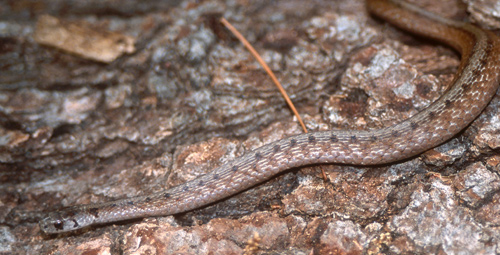The dekay's brownsnake is a small snake with a dark brown or tan body and two rows of darker spots down its back. Often there is a lighter band along the back as well. Its belly is gray to pink and can have small black spots. These snakes can be 9 to 15 inches long.
Dekay's brownsakes range through the eastern half of the US. They are found throughout Connecticut and are more common in developed areas. Their population in the state is considered secure.
Dekay's brownsnakes prefer disturbed areas. They do well in urban areas. They seek out places where they can stay under cover.
Mating season is in March to May in New England. Females bear 3 to 31 live babies. The young are about 3 1/2 inches long and have a white neck ring and a darker body. They tend to stay near their mother right after birth, but she doesn't give them maternal care.
Dekay's brownsnakes are secretive, preferring to stay under cover. They are out in the day, but will become nocturnal in very warm weather. They are a somewhat cold-tolerant species and begin hibernation in October or November. They can emerge in March or April. They den in burrows, rock crevices or under buildings, below the frost line. They often den communally and share winter dens with other brownsnakes and with other snake species such as garter snakes, redbelly snakes and smooth greensnakes.
Dekay's brownsnakes eat insects, earthworms, and small treefrogs.
Dekay's brownsnakes will try to avoid humans and tend to hide underneath debris or rocks. They are fairly docile and although they can produce musk and bite if handled this is rare. They are quite harmless little snakes.
Dekay's brownsnakes are most often confused with redbelly snakes.
